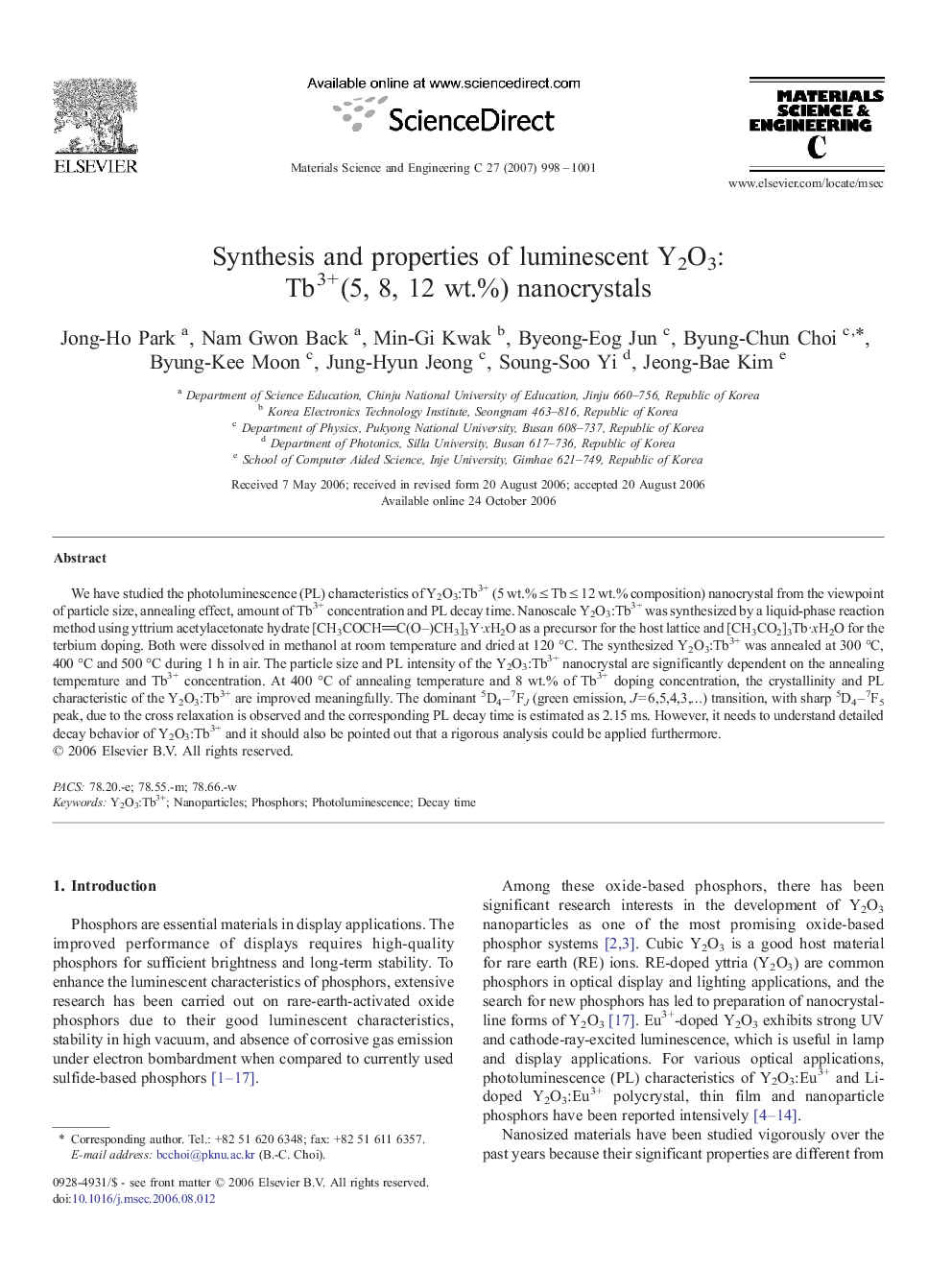| Article ID | Journal | Published Year | Pages | File Type |
|---|---|---|---|---|
| 7870689 | Materials Science and Engineering: C | 2007 | 4 Pages |
Abstract
We have studied the photoluminescence (PL) characteristics of Y2O3:Tb3+ (5 wt.% â¤Â Tb â¤Â 12 wt.% composition) nanocrystal from the viewpoint of particle size, annealing effect, amount of Tb3+ concentration and PL decay time. Nanoscale Y2O3:Tb3+ was synthesized by a liquid-phase reaction method using yttrium acetylacetonate hydrate [CH3COCHC(O-)CH3]3Y·xH2O as a precursor for the host lattice and [CH3CO2]3Tb·xH2O for the terbium doping. Both were dissolved in methanol at room temperature and dried at 120 °C. The synthesized Y2O3:Tb3+ was annealed at 300 °C, 400 °C and 500 °C during 1 h in air. The particle size and PL intensity of the Y2O3:Tb3+ nanocrystal are significantly dependent on the annealing temperature and Tb3+ concentration. At 400 °C of annealing temperature and 8 wt.% of Tb3+ doping concentration, the crystallinity and PL characteristic of the Y2O3:Tb3+ are improved meaningfully. The dominant 5D4-7FJ (green emission, J = 6,5,4,3,â¦) transition, with sharp 5D4-7F5 peak, due to the cross relaxation is observed and the corresponding PL decay time is estimated as 2.15 ms. However, it needs to understand detailed decay behavior of Y2O3:Tb3+ and it should also be pointed out that a rigorous analysis could be applied furthermore.
Related Topics
Physical Sciences and Engineering
Materials Science
Biomaterials
Authors
Jong-Ho Park, Nam Gwon Back, Min-Gi Kwak, Byeong-Eog Jun, Byung-Chun Choi, Byung-Kee Moon, Jung-Hyun Jeong, Soung-Soo Yi, Jeong-Bae Kim,
